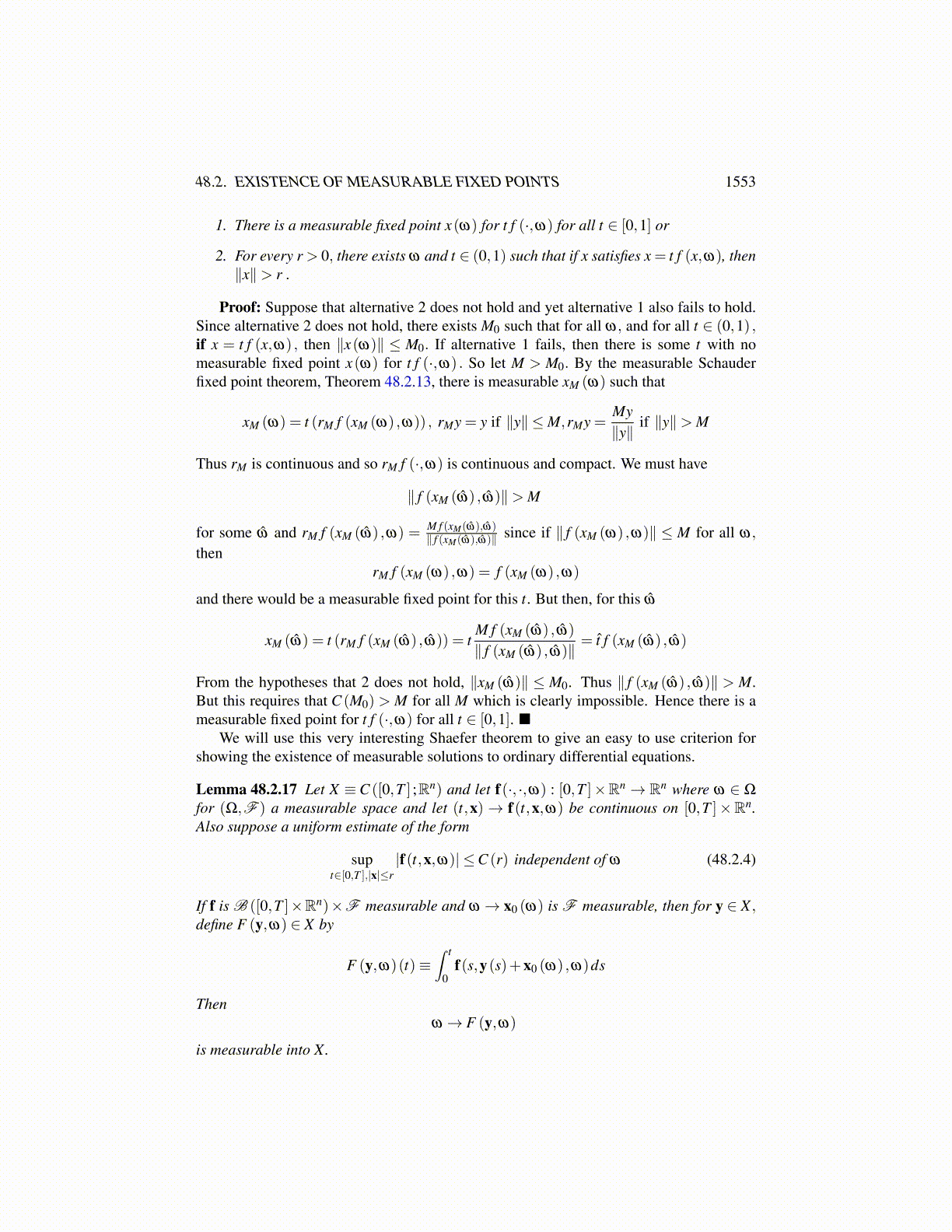
48.2. EXISTENCE OF MEASURABLE FIXED POINTS 1553
Thus, from now on, simply denote as n the upper limit and let ω ∈ Ωn. If fr (xr,ω) = xrand
xr =n
∑i=1
aiyi (ω)
for ∑ni=1 ai = 1 and the yi described in the above lemma, we need
fr (xr,ω) ≡n
∑i=1
yi (ω)ψ i ( f (xr,ω) ,ω)
=n
∑j=1
y j (ω)ψ j
(f
(n
∑i=1
aiyi,ω
),ω
)=
n
∑j=1
a jy j (ω) = xr.
Also, if this is satisfied, then we have the desired fixed point.This will be satisfied if for each j = 1, · · · ,n,
a j = ψ j
(f
(n
∑i=1
aiyi,ω
),ω
)(48.2.3)
so, let
Σn−1 ≡
{a ∈ Rn :
n
∑i=1
ai = 1, ai ≥ 0
}and let h(·,ω) : Σn−1→ Σn−1 be given by
h(a,ω) j ≡ ψ j
(f
(n
∑i=1
aiyi,ω
),ω
)
Can we obtain a fixed point a(ω) such that ω → a(ω) is measurable? Since h(·,ω) is acontinuous function of a and ω → h(x,ω) is measurable, such a measurable fixed pointexists thanks to Theorem 48.2.4 or the much easier Theorem 48.2.8 above. Then xr (ω) =
∑ni=1 ai (ω)yi (ω) so xr is measurable.
The following is the Schauder fixed point theorem for measurable fixed points.
Theorem 48.2.13 Let ω → K (ω) be a measurable multifunction which has convex andclosed values in a separable Banach space. Let f (·,ω) : K (ω)→ K (ω) be continuousand ω → f (x,ω) is measurable and f (K (ω) ,ω) is compact. Then f (·,ω) has a fixedpoint x(ω) such that ω → x(ω) is measurable.
Proof: Recall that f (xr (ω) ,ω)− fr (xr (ω) ,ω) ∈ B(0,r) and fr (xr (ω) ,ω) = xr (ω)with xr (ω) ∈ convex hull of f (K (ω) ,ω) ⊆ K (ω) . Here xr is measurable. By Lemma48.2.2 there is a measurable function x(ω) which equals the weak limr(ω)→0 xr(ω) (ω) .
However, since f (K (ω) ,ω) is compact, there is a subsequence still denoted with r (ω)such that f
(xr(ω),ω
)converges strongly to some x ∈ f (K (ω) ,ω). It follows that
fr(ω)
(xr(ω) (ω) ,ω
)